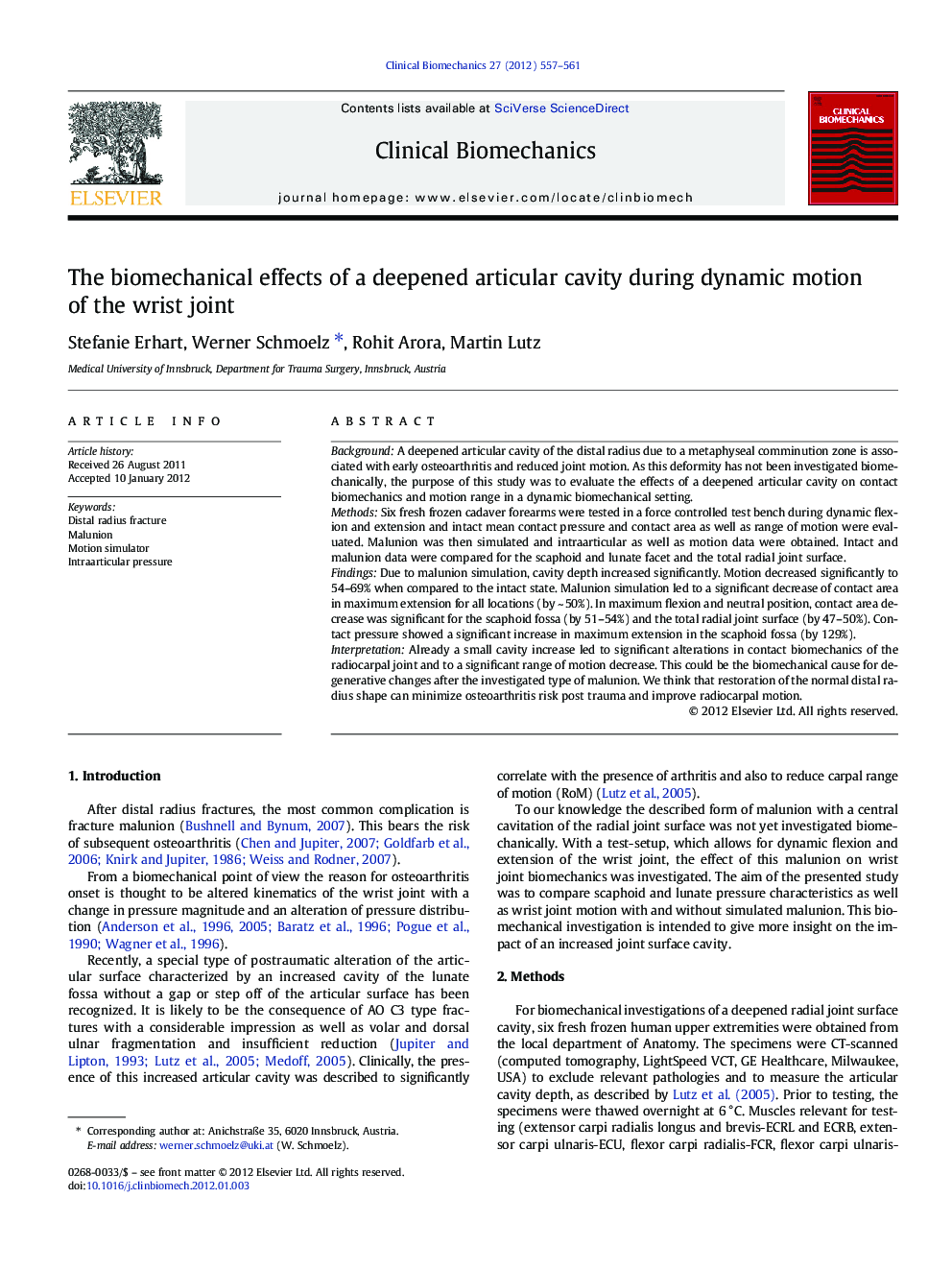| Article ID | Journal | Published Year | Pages | File Type |
|---|---|---|---|---|
| 4050551 | Clinical Biomechanics | 2012 | 5 Pages |
BackgroundA deepened articular cavity of the distal radius due to a metaphyseal comminution zone is associated with early osteoarthritis and reduced joint motion. As this deformity has not been investigated biomechanically, the purpose of this study was to evaluate the effects of a deepened articular cavity on contact biomechanics and motion range in a dynamic biomechanical setting.MethodsSix fresh frozen cadaver forearms were tested in a force controlled test bench during dynamic flexion and extension and intact mean contact pressure and contact area as well as range of motion were evaluated. Malunion was then simulated and intraarticular as well as motion data were obtained. Intact and malunion data were compared for the scaphoid and lunate facet and the total radial joint surface.FindingsDue to malunion simulation, cavity depth increased significantly. Motion decreased significantly to 54–69% when compared to the intact state. Malunion simulation led to a significant decrease of contact area in maximum extension for all locations (by ~ 50%). In maximum flexion and neutral position, contact area decrease was significant for the scaphoid fossa (by 51–54%) and the total radial joint surface (by 47–50%). Contact pressure showed a significant increase in maximum extension in the scaphoid fossa (by 129%).InterpretationAlready a small cavity increase led to significant alterations in contact biomechanics of the radiocarpal joint and to a significant range of motion decrease. This could be the biomechanical cause for degenerative changes after the investigated type of malunion. We think that restoration of the normal distal radius shape can minimize osteoarthritis risk post trauma and improve radiocarpal motion.
